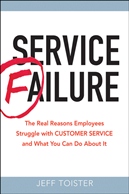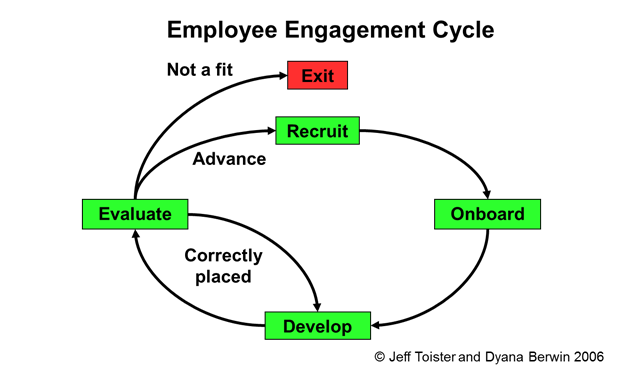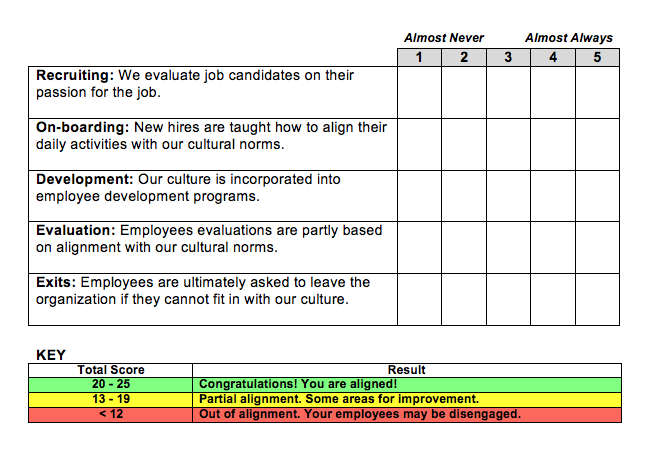Response to: In Defense of Customer Service Scripts
 Jeff Toister
Jeff Toister  Thursday, April 25, 2013 at 9:05AM |
Thursday, April 25, 2013 at 9:05AM | I regularly enjoy reading Adam Toporek’s Customers That Stick blog because it offers engaging customer service insight. One of his recent posts was slightly controversial because it promoted the value of using customer service scripts in certain situations where employees don't have enough skills. As an example, he described Julie, a new employee who has been given very little training and has limited customer service experience.
It's a well-reasoned argument. It is also one of the few cases where Toporek and I disagree. In my opinion, giving a new, poorly trained, and inexperienced employee like Julie a script will all but guarantee she’ll frequently provide poor service.
Why?
 Our brains can only focus on one conscious thought at a time. Interacting with customers requires a lot of concentration for new and inexperienced employees like Julie who are still learning how to do their jobs. When you give them a script, they can easily sound like a robot because they end up focusing on the script instead of the customer.
Our brains can only focus on one conscious thought at a time. Interacting with customers requires a lot of concentration for new and inexperienced employees like Julie who are still learning how to do their jobs. When you give them a script, they can easily sound like a robot because they end up focusing on the script instead of the customer.
This in turn makes it harder for employees like Julie to understand each individual customer’s needs and to tailor their service to the situation.
How can we help employees like Julie?
The first step is to stop taking short-cuts when it comes to hiring and training. Toporek correctly asserts that frontline employees like Julie often receive very little training. This short-sighted approach misses the fact that a lack of proper training is usually more costly in terms of lost sales, customer recovery, and the cost of high turnover (Julie won't stay long if she doesn't enjoy reading scripts).
The second step is to give Julie guidelines that should be easy to follow if you’ve hired the right person. For example, instead of a precisely worded script you can provide a guideline that Julie greet each customer in a warm and friendly manner. How she does it is up to her.
Does the thought of giving a new employee enough autonomy to choose how she will greet customers scare you? If so, you’ll never have employees empowered enough to make the really critical decisions when it comes to serving customers.
However, you can ensure that Julie greets customers in a way that’s consistent with the rest of the team, even if it’s with her own personal twist.
The starting point is training. Don’t confuse training with handing out a script. (“Here’s your script. Now you are trained!”)
Training involves working with Julie until she can demonstrate the ability to greet customers in a warm, friendly, and appropriate manner. You've probably made a poor hiring decision if Julie can’t figure out how to greet customers after being given a few simple guidelines and a little bit of training.
The next step is reinforcement. If you don’t reinforce good habits from the start you’ll never be quite sure if they'll stick. Julie might nail customer greetings in the new hire training phase of her employment, but abandon them all together when she learns that her co-workers do something different when the boss isn’t watching.
This brings us to the last and most critical point. Everybody has to be on board with doing things the right way.
Peer pressure is one of the most powerful forces driving employee performance, especially for a young and inexperienced employee like Julie. She could see her peers passionately committed to making customers feel welcome and she’ll quickly learn to do the same. Julie might even get a little gentle encouragement or nudging from her co-workers who are eager to help her fit in.
The opposite is true too. Julie might soon learn from her co-workers that nobody cares about greeting customers and the script, the guidelines, or whatever tools you’ve given her will go right out the window.
Yes, the sweet siren song of implementing a script is alluring. It's also likely to result in service failure.
Note: No matter who you agree with, I encourage you to check out Toporek’s outstanding Customers That Stick blog.













